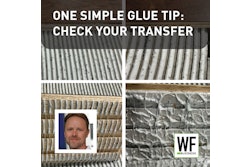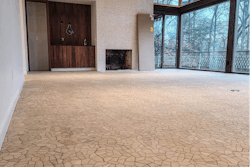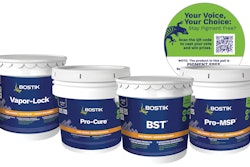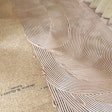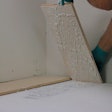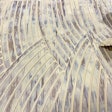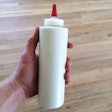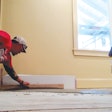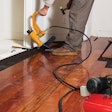
The long-term success or failure of a glue-down wood flooring installation can invariably be traced back to the basic steps taken by the installer. Many of the preparation and installation requirements that help ensure a proper installation have also (unfortunately!) proven to be among the most frequently overlooked. Always do the following:
1) Pick the right adhesive
The crucial starting point is to select the right adhesive for the job. The type, length, and width of the flooring, as well as the type of subfloor, all serve to inform this decision. With a multitude of adhesive technologies available in the market, including urethanes, polymers and acrylics, the installer should gather as much information as possible about the need and attributes of the job site to make the best selection.
2) Do moisture testing and subfloor prep
Once the adhesive and other materials are chosen, the installer can focus on the critical phase of moisture testing and subfloor preparation. Wood and concrete subfloors require different preparation procedures. If installing over concrete, installers should be prepared to either conduct moisture testing, in the form of a three-day calcium chloride test or a one-day relative humidity test, or to utilize a wood flooring adhesive that saves time and money by offering unlimited moisture control with no testing required.
In the case of both wood or concrete subfloors, the subfloor should be flat, dry, and clean of all dust and debris. While perhaps the simplest aspect of the installation prep work, this tends to be frequently ignored.
3) Use the recommended trowel
Just as essential as choosing the adhesive is ensuring the proper trowel is used. The adhesive manufacturer specifies the trowel requirements and spread rates. Often adhesives that allow for both moisture control and bond-only applications will differentiate distinct trowels for each approach. All other instructions and requirements from the adhesive manufacturer should be followed, including adhesive coverage, transfer, open time, shelf life, storage and more. The guidelines of the wood flooring manufacturer must be followed, as well.
RELATED: Tricks From My Life Doing Glue-Down Installs















